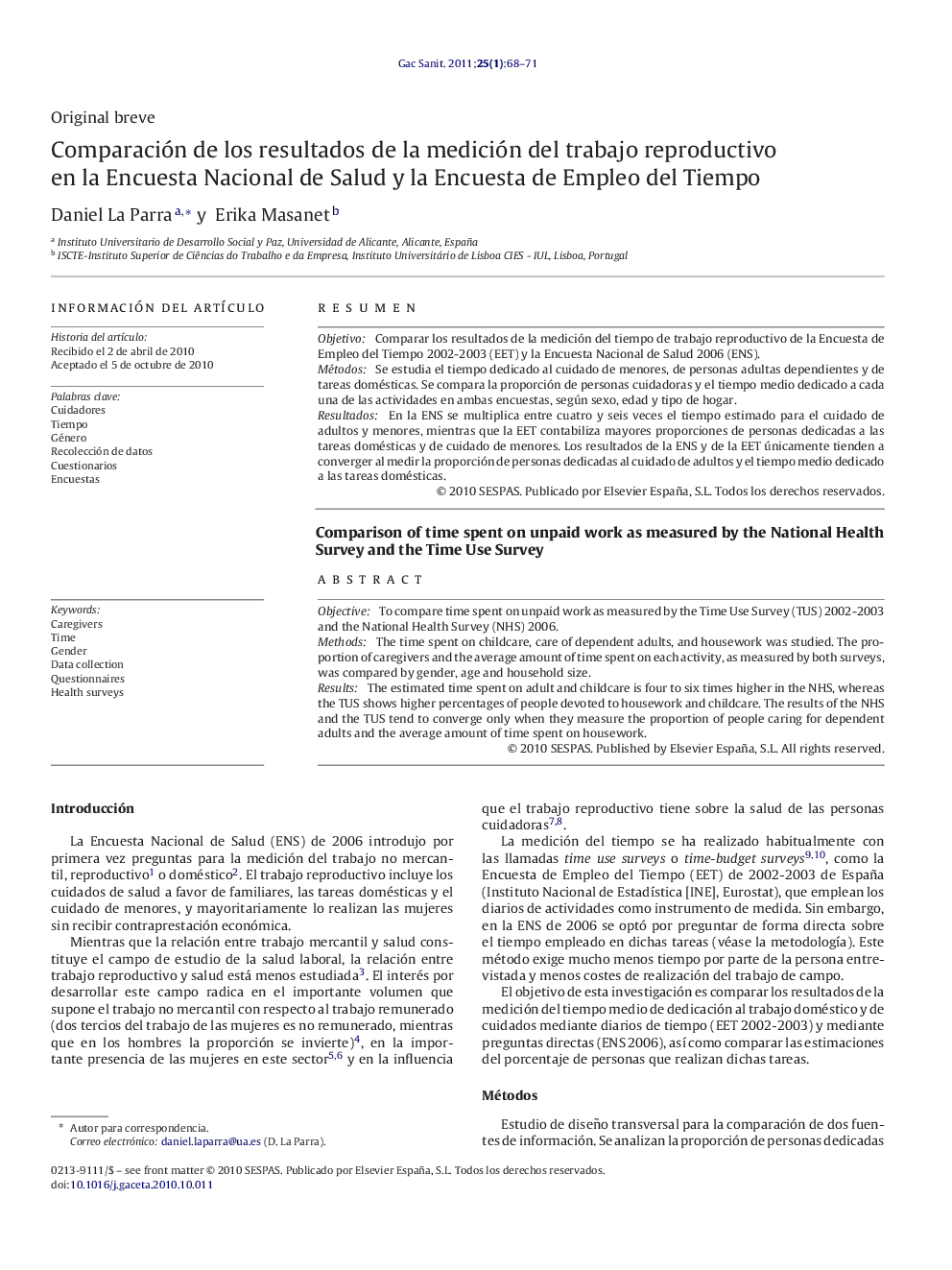| Article ID | Journal | Published Year | Pages | File Type |
|---|---|---|---|---|
| 1074175 | Gaceta Sanitaria | 2011 | 4 Pages |
ResumenObjetivoComparar los resultados de la medición del tiempo de trabajo reproductivo de la Encuesta de Empleo del Tiempo 2002-2003 (EET) y la Encuesta Nacional de Salud 2006 (ENS).MétodosSe estudia el tiempo dedicado al cuidado de menores, de personas adultas dependientes y de tareas domésticas. Se compara la proporción de personas cuidadoras y el tiempo medio dedicado a cada una de las actividades en ambas encuestas, según sexo, edad y tipo de hogar.ResultadosEn la ENS se multiplica entre cuatro y seis veces el tiempo estimado para el cuidado de adultos y menores, mientras que la EET contabiliza mayores proporciones de personas dedicadas a las tareas domésticas y de cuidado de menores. Los resultados de la ENS y de la EET únicamente tienden a converger al medir la proporción de personas dedicadas al cuidado de adultos y el tiempo medio dedicado a las tareas domésticas.
ObjectiveTo compare time spent on unpaid work as measured by the Time Use Survey (TUS) 2002-2003 and the National Health Survey (NHS) 2006.MethodsThe time spent on childcare, care of dependent adults, and housework was studied. The proportion of caregivers and the average amount of time spent on each activity, as measured by both surveys, was compared by gender, age and household size.ResultsThe estimated time spent on adult and childcare is four to six times higher in the NHS, whereas the TUS shows higher percentages of people devoted to housework and childcare. The results of the NHS and the TUS tend to converge only when they measure the proportion of people caring for dependent adults and the average amount of time spent on housework.
